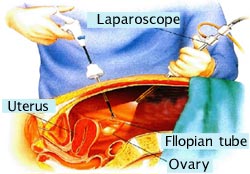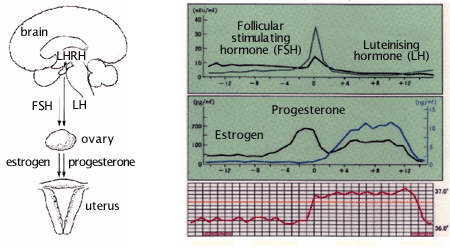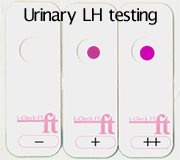
First Visit
– Male fertility test2
Endometriosis
Endometriosis is a condition in which endometrial tissue is found outside the uterus.
This slide shows the stages of endometriosis. Endometriosis is classified into 4 stages according to severity. The areas commonly affected are the ovaries, fallopian tubes, the walls of the pelvis and in the uterine wall. In severe endometriosis, the tubes, ovaries and bowel are stuck together almost as if glue had been poured in to the pelvis. Release of the egg from the ovary and its passage through the distorted tube is, therefore, hampered.
Different stage of endometriosis

Laparoscopy
 Laparoscope is an instrument which allows the pelvic organs to be inspected under direct vision.
Laparoscope is an instrument which allows the pelvic organs to be inspected under direct vision.
The procedure is performed under general anesthesia. A tiny incision is made just below the umbilicus (navel) and carbon dioxide are introduced to distend the abdominal cavity this separate the bowel from the abdominal wall so that endoscope can be inserted safely. Operation time is about 10-15 minutes.
When to use laparoscopy:
- Currently laparoscopy is the only procedure that can be carried out to accurately determine if an adhesion exists.
- Salpingogram (X-ray examination) tells us about the state of the inside of the fallopian tubes.
High risks groups include those who have:
- Undergone a previous abdominal surgery for a disorder such as ovarian endometriosis, a uterine myoma, or a ruptured appendix.
- Had multiple sexual partners (at risk of having had a sexually transmitted disease that has gone unrecognized), or have had a confirmed case of a sexually transmitted disease.
- About 50% of female partners, who are part of healthy couples that have been unable to conceive after 1 year of regular unprotected sexual intercourse, have a peritubal adhesion.
Fibroids
 Fibroids rarely cause infertility unless they become large enough to prevent the embryo from implanting.
Fibroids rarely cause infertility unless they become large enough to prevent the embryo from implanting.
Hormonal control of the menstrual cycle
This figure is showing hormonal control of the menstrual cycle. At the beginning of the cycle, blood levels of the estrogen are very low. In response to the low levels, the hypothalamus release more LHRH that stimulates the pituitary gland to secrete more FSH. FSH stimulates the ovary to produce estrogen and a number of follicles start to develop. As the concen-tration reaches a critical level, it leads to a sudden release of LH from the pituitary gland.

 This mid-cycle surge of LH induces maturation of egg and then, 36 hours or so after the beginning of the surge, it triggers ovulation. Once ovulation has occurred, the empty follicle collapses to from a yellowish structure. (left image: The dominant follicle disappears and on a subsequent scan, a solid corpus luteum can be seen in its place.) The corpus luteum continues the secretion of estrogen and progesterone. These are two hormone act together to prepare for the implantation. Basal body temperature, (BBT) rises sharply after the ovulation. The rise occurs through the action of progesterone, secreted by the corpus luteum. The most accurate method for predicting the ovulation will be the detection of LH surge.
This mid-cycle surge of LH induces maturation of egg and then, 36 hours or so after the beginning of the surge, it triggers ovulation. Once ovulation has occurred, the empty follicle collapses to from a yellowish structure. (left image: The dominant follicle disappears and on a subsequent scan, a solid corpus luteum can be seen in its place.) The corpus luteum continues the secretion of estrogen and progesterone. These are two hormone act together to prepare for the implantation. Basal body temperature, (BBT) rises sharply after the ovulation. The rise occurs through the action of progesterone, secreted by the corpus luteum. The most accurate method for predicting the ovulation will be the detection of LH surge.
How ovulation is determined:
 Ovulation can easily be detected with a hormone sensitive kit that detects the mid-cycle LH surge in the urine.
Ovulation can easily be detected with a hormone sensitive kit that detects the mid-cycle LH surge in the urine.
Ovulation occurs approximately 24 hours after a strong positive (+ +) result (Large clean red circle) is observed.
